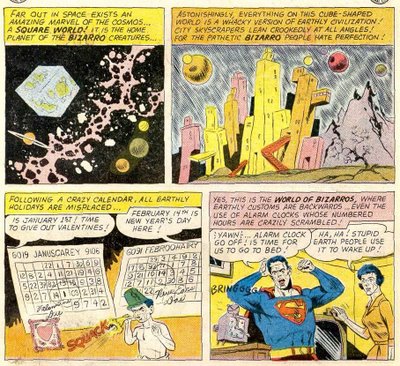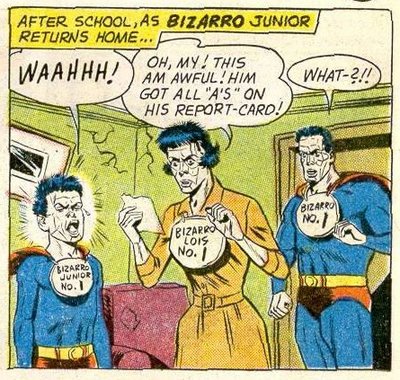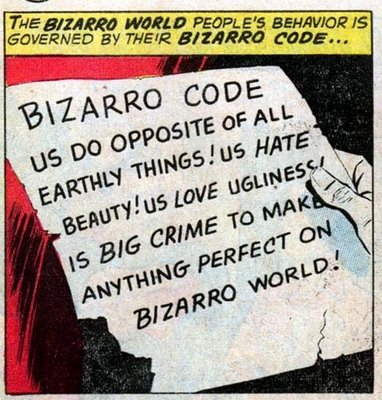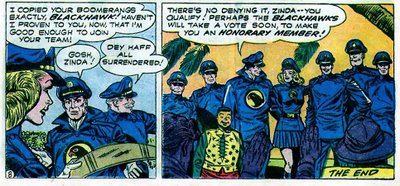Following his return in Action #254 and #255, Bizarro made several more appearances. Apparently the character was popular enough that DC gave him a continuing feature in Adventure starting with #285, the June 1961 issue. This had a cascading effect. Congorilla was dropped after a long history as Congo Bill that stretched through More Fun to Action (for over 200 consecutive issues) to Adventure. Congo Bill was at the time the third-longest running feature in DC Comics, after Superman and Batman.
Aquaman was bumped from the backup spot in Adventure that he had held down for almost 15 years. He was briefly sent over to Detective, causing the cancellation of Roy Raymond, who exposed frauds on his tv show in that slot for about 12 years. After eight issues there, he was sent to World's Finest, resulting in the cancellation of yet another long-running series, Tommy Tomorrow (although DC would soon give the series several tryout issues).
Just another example of how Bizarro tended to bump things around, I guess. Now, when Bizarro appears on Earth, he's trouble for Superman and a somewhat tragic figure. But on his own world he's an everyman, with a wife and children.
Yes, children. Never mind that we had been assured from the beginning that Bizarros weren't alive, somehow they could reproduce sexually because Bizarro #1 and Bizarro Lois Lane #1 had both a son and a daughter, and there were many other children.
The Bizarro stories often focused on the oddities of that world:

The writers, egged on by readers' suggestions, came up with more and more examples of just how bizarre the Bizarros were. The Bizarro washing machine takes clean clothes and makes them dirty. The Bizarro children go off to school, where they try hard to learn the wrong answers. This causes some ironic problems:

In the second story we learn the Bizarro Code:

We also discover the name of the Bizarro planet: Htrae (Earth spelled backwards).
More about →
Aquaman was bumped from the backup spot in Adventure that he had held down for almost 15 years. He was briefly sent over to Detective, causing the cancellation of Roy Raymond, who exposed frauds on his tv show in that slot for about 12 years. After eight issues there, he was sent to World's Finest, resulting in the cancellation of yet another long-running series, Tommy Tomorrow (although DC would soon give the series several tryout issues).
Just another example of how Bizarro tended to bump things around, I guess. Now, when Bizarro appears on Earth, he's trouble for Superman and a somewhat tragic figure. But on his own world he's an everyman, with a wife and children.
Yes, children. Never mind that we had been assured from the beginning that Bizarros weren't alive, somehow they could reproduce sexually because Bizarro #1 and Bizarro Lois Lane #1 had both a son and a daughter, and there were many other children.
The Bizarro stories often focused on the oddities of that world:

The writers, egged on by readers' suggestions, came up with more and more examples of just how bizarre the Bizarros were. The Bizarro washing machine takes clean clothes and makes them dirty. The Bizarro children go off to school, where they try hard to learn the wrong answers. This causes some ironic problems:

In the second story we learn the Bizarro Code:

We also discover the name of the Bizarro planet: Htrae (Earth spelled backwards).












